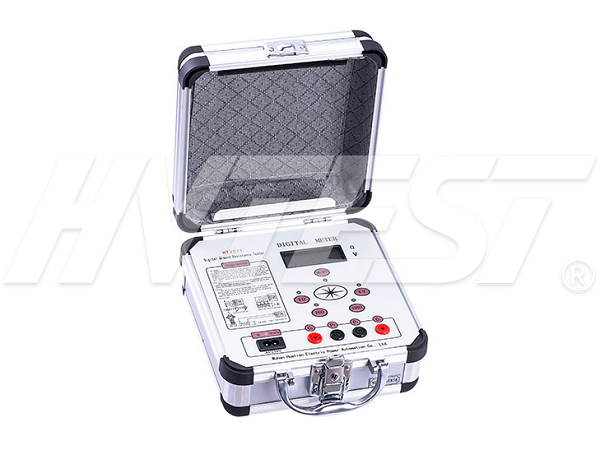Detection Technology
Various usage methods of ground resistance tester
Various usage methods of ground resistance tester
Ground resistance measurement methods usually have the following types: two-wire method, three-wire method, four-wire method, single-clamp method and double-clamp method. Each has its own characteristics. In actual measurement, try to choose the correct method to make the measurement result accurate.
1. Two-line method
Condition: There must be a known well-grounded ground, such as PEN, etc. The measured result is the sum of the resistance of the measured ground and the known ground. If the known ground is much smaller than the resistance of the measured ground, the measurement result can be used as the result of the measured ground.
Applicable to: dense buildings or cement ground and other sealed areas where piles cannot be driven.
Wiring: E+ES is connected to the measured ground, H+S is connected to the known ground.
2. Three-line method
Condition: There must be two ground rods: an auxiliary ground and a detection electrode. The distance between each ground electrode is not less than 20 meters.
The principle is to add a current between the auxiliary ground and the measured ground to measure the voltage drop between the measured ground and the probe electrode. The measurement result includes the resistance of the measuring cable itself.
Applicable to: grounding of foundation, construction site grounding and lightning ball type lightning rod QPZ grounding.
Wiring: S is connected to the detection electrode, H is connected to the auxiliary ground, and E and ES are connected to the ground to be measured.
3. Four-wire method
Basically the same as the three-wire method, it replaces the three-wire method when measuring low ground resistance and eliminating the influence of the measurement cable resistance on the measurement results. E and ES must be directly connected to the measured ground separately during measurement. This method has the highest accuracy z among all grounding resistance measurement methods.
4. Single clamp measurement
Condition: Measure the ground resistance of each ground point in the multi-point grounding, and the ground connection cannot be disconnected to prevent danger.
Applicable to: multi-point grounding, can not be disconnected, measuring the resistance of each grounding point.
Wiring: Use a current clamp to monitor the current on the ground point under test.
5. Double clamp method
Conditions: Multi-point grounding, no auxiliary ground piles, and single grounding measurement.
Wiring: Use the manufacturer's current clamp to connect to the corresponding socket, and clamp the two clamps on the grounding conductor. The distance between the two clamps should be greater than 0.25 meters.
Microcomputer Relay Protection Tester Test | 2021/5/10 | reading745time Working principle of relay protection tester | 2021/5/9 | reading677time return


